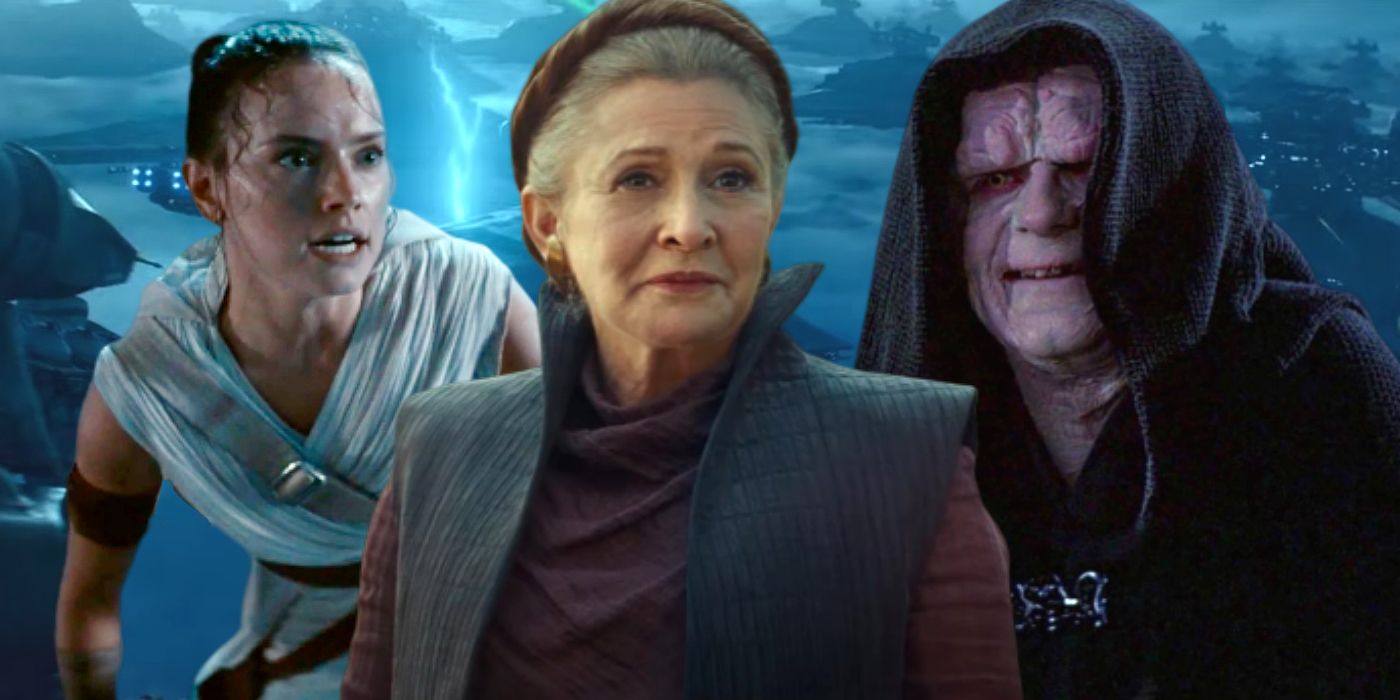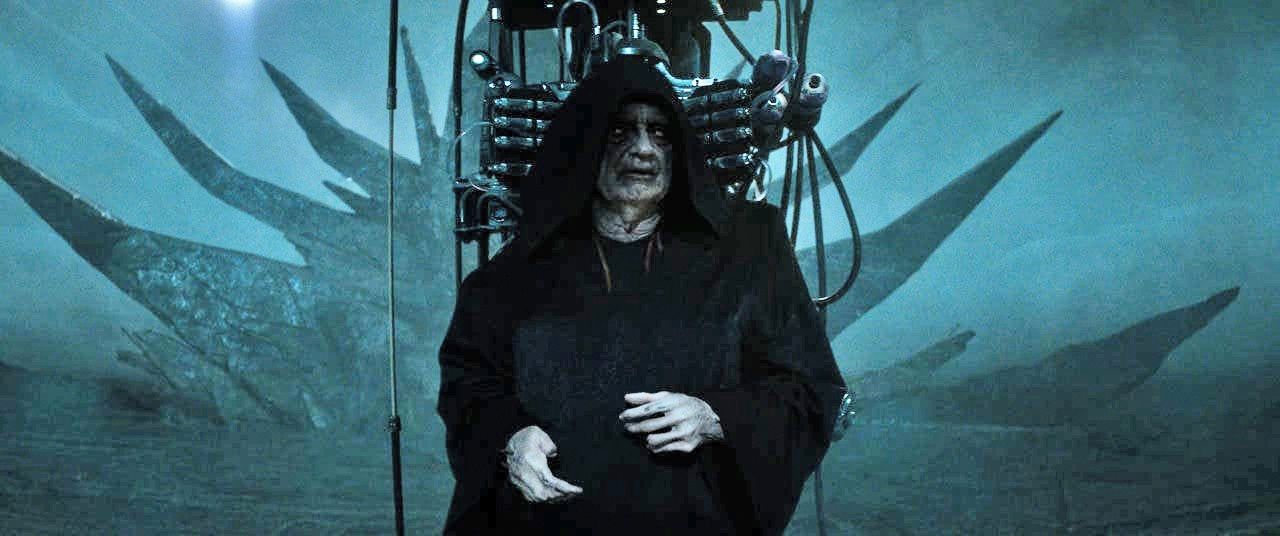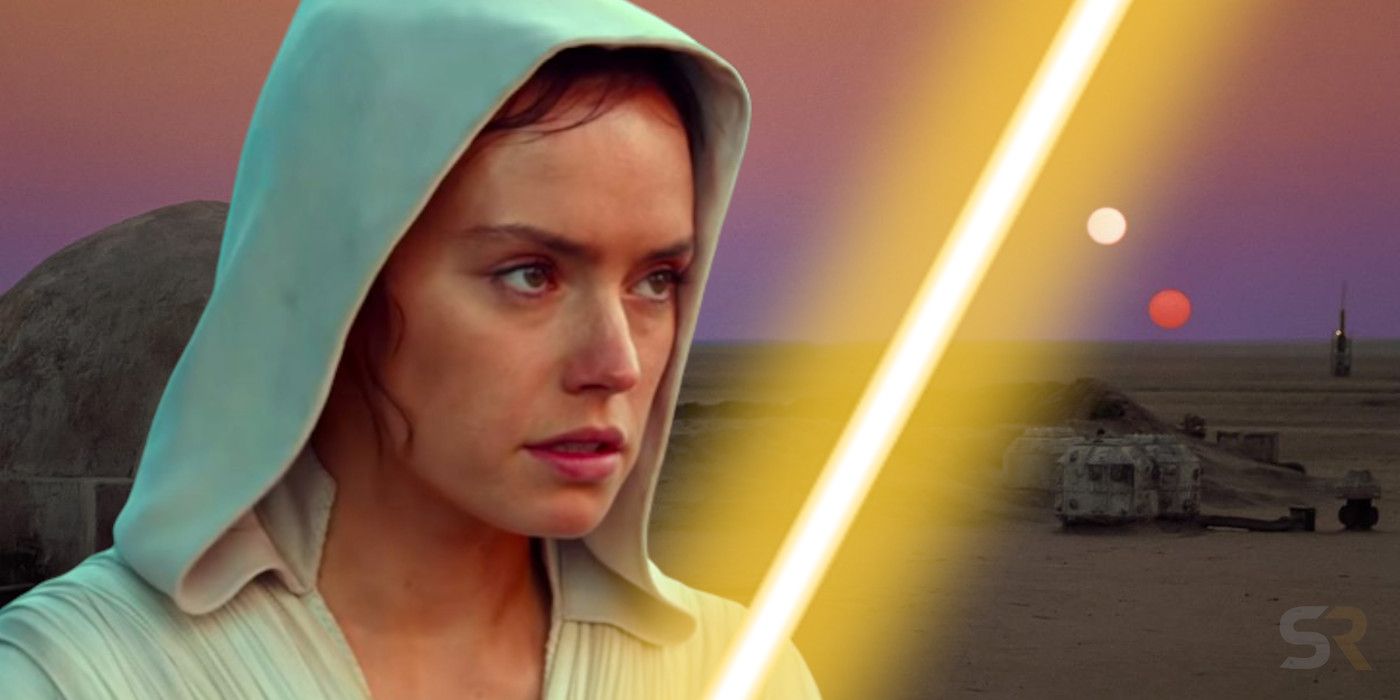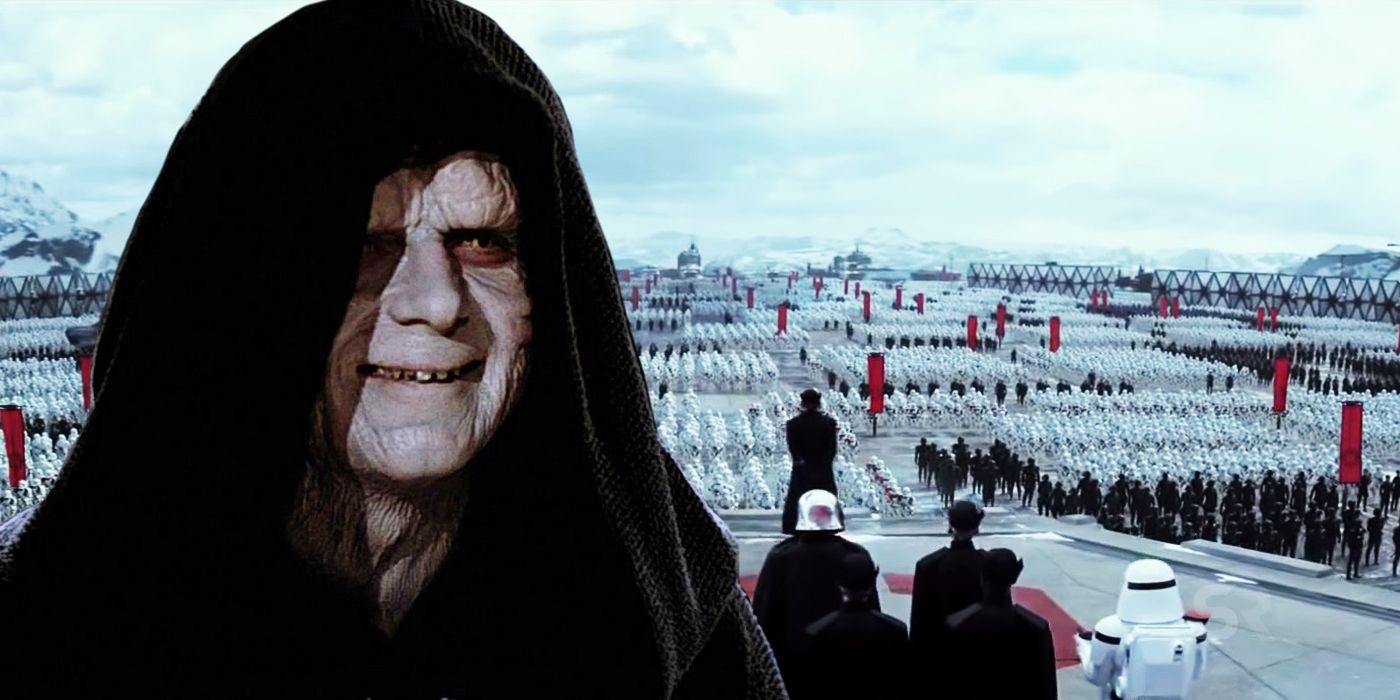Star Wars: The Rise of Skywalker brings the 9 film Skywalker saga to a close, and in doing so leaves the galaxy in a radically different place than at the beginning of the sequel trilogy. The original trilogy concluded with Luke Skywalker and the Rebellion successful in their struggle against the Galactic Empire, defeating the Emperor and redeeming Anakin Skywalker. 2015's Star Wars: The Force Awakens was the start of an entirely new trio of movies, introducing us to several new major players as well as reintroducing us to the classic characters we all know and love.
While a major criticism of The Force Awakens was that it felt too similar to the conflict set up in Star Wars: A New Hope, the sequel trilogy has grown into its own over the course of three films. It's discovered that Luke Skywalker attempted to start a new Jedi Order in the aftermath of the fall of the Empire, but was unable to stop his nephew from turning to the dark side and aiding in the rise of the First Order. The sequel trilogy thrusts audiences into the middle of another massive galactic-scale war, this time between the sinister First Order and the aptly-named Resistance. We're also introduced to Rey, a young scavenger on the planet Jakku who discovers her latent Force abilities and begins training in order to carry on the legacy of the Jedi.
If The Force Awakens created a new status quo at the start of the sequel trilogy, The Rise of Skywalker completely shifts that in a new direction. By bringing the story of the Skywalkers to a definite close (for now, at least), Star Wars 9 leaves the galaxy in a unique state, filled with intrigue and opportunity.
The First Order, Sith, and Palpatine Are Gone
One of the most anticipated plot points from Star Wars: The Rise of Skywalker was Palpatine's return, and how exactly he would factor into the film. As audiences soon discovered, The Emperor had been responsible for the entirety of the sequel trilogy thusfar. He was directly behind Ben Solo's turn to the Dark Side, as well as the shocking reveal that he's Palpatine is actually the grandfather of Rey. In one fell-swoop, Abrams and Terrio made Palpatine the antagonist of not just the original and prequel trilogies, but the entire Skywalker saga.
However, the ending of The Rise of Skywalker sees Rey defeat Palpatine with the help of the spirits of the Jedi Order. The Resistance also gets a much needed win by destroying Palpatine's Star Destroyer armada, effectively defeating the Empire and the First Order once and for all. With the deaths of Palpatine and the First Order, the legacy of the Sith and the Empire have been completely wiped out, along with the Sith Eternal cult on Exegol. It's unclear what kind of major ramifications this will have on the Force moving forward, but the concept of balance has been completely redefined by the sequel trilogy as the primary dark side user in the new the films, Kylo Ren, is redeemed and turned back to the light by Rey.
The biggest consequence of this will inevitably be the massive power vacuum left behind now that the primary antagonist is gone. The Empire (which eventually culminated in the First Order), while evil, were also a major structural system responsible for the ebb and flow of the galaxy, both socially and politically. Its roots ran so deep that Palpatine created a contingency plan with the sole purpose of starting from scratch and rebuilding his empire from the ground up if he ever faced an untimely demise. A systemic structure so thoroughly entwined with the fate of the galaxy must have some kind of replacement, which hopefully will be decidedly less fascistic than its predecessors.
The Resistance Must Make A New 'New Republic'
The New Republic was a democratic galactic government created from the ground up by the Rebellion, born out of the ashes of the believed defeat of the Galactic Empire. The New Republic attempted to embody the ideas of its predecessor, the Galactic Republic, and strove to create an atmosphere of peace and prosperity among the galaxy. They did this through anti-war legislation, most notably the Military Disarmament Act, which was a law signed into accord that reduced the size of the Republic's centralized military by ninety percent. Despite the small size of their military and recent beginnings, the New Republic was notable for being a government system priding itself on diplomacy and egalitarianism.
That of course changed with the rise of the First Order, a group of Empire loyalists. In The Force Awakens, the First Order tests the might of Starkiller Base by destroying the entirety of the Hosnian System, the star system that housed the New Republic and the Galactic Senate. This one strike solidified the power of the First Order in the galaxy and caused countless planets to fall in line with them.
If democracy is to last within the galaxy, the Resistance must begin the arduous task of constructing an entirely new Republic. While its predecessor made a considerable impact through its egalitarian ideologies and positive relations with other planets, a new New Republic should also be wary of making the same mistake and reducing its military power. A government system in pursuit of peace throughout the galaxy, but with the military strength and contextual understanding of the galaxy's previous conflicts should be enough to face off properly against any threats that may rise up against them.
Rey Can Train New Jedi
With The Rise of Skywalker ending with Rey taking on the Skywalker name, it only makes sense that she would attempt to reconcile the mistakes of her mentor. During the gap of time between Return of the Jedi and The Force Awakens, we know that Luke Skywalker attempted to train a new generation of Jedi to defend the galaxy against threats such as the Sith. However, unbeknownst to him, Palpatine (as Snoke) had been manipulating Ben Solo in an effort to turn him to the dark side, which he does (with a bit of unintentional help from Luke himself). This causes the total collapse of Luke's academy and turns the hero into a bitter recluse, who Rey helps to uplift and empower once again.
Because of Luke's death in The Last Jedi, that title falls now to Rey, the only person in the galaxy with the proper training to truly call herself a Jedi. While Luke's belief at the beginning of The Last Jedi was that the monastic institution should be allowed to die because of the mistakes they'd made in the past, Rey calls on the Jedi for guidance and support in The Rise of Skywalker, showing that she believes there is potential in the organization.
Couple this with the fact that she now owns the same Jedi texts that were once housed on the birthplace of the Jedi, Ahch-To, and it stands to reason that Rey could attempt to rebuild the Jedi academy out of the ashes of Luke's failure. Considering she was the person who convinced Luke that Kylo's soul could still be saved, it seems as if her qualities as a hero would prevent her from making the exact same mistake that Luke did. Her natural proficiency in the Force alongside her compassionate and headstrong qualities would make her the perfect teacher for a new generation of Jedi.
What Future Threats Exist?
Due to Palpatine's death at the hands of Rey, the galaxy is seemingly once again in a state of relative peace. However, this doesn't mean that everything is entirely safe, as there are threats about the galaxy that could return to threaten their newly won peace and stability. One such threat is the Crimson Dawn, which was an underground criminal organization constructed by Darth Maul during the reign of the Galactic Empire. The group debuted in Solo: A Star Wars Story, where it was revealed that they were originally a band of bloodthirsty mercenaries who traveled from planet to planet, ransacking the resources and terrorizing the locals. Eventually they were absorbed by Darth Maul, who hid himself from his subordinates and installed Dryden Vos as a puppet figurehead. While Vos was killed by his protege Kira, the last time we saw her she was heading to meet with Maul personally.
Star Wars Rebels also reintroduced the character of Mitth'raw'nuruodo, better known as Grand Admiral Thrawn. Thrawn was a popular character from the Star Wars Expanded Universe, a brilliant strategist and Grand Admiral of the Imperial Navy during the Galactic Empire's rule. He was responsible for several of the Rebellion's crushing defeats and even found himself working side-by-side with Vader and the Emperor. The last time he was seen was in Star Wars Rebels season 4 episodes fifteen and sixteen "Family Reunion - and Farewell," where a group of purrgil - an alien race that live in deep space - attacked his ship and dragged him into hyperspace above the planet Lothal. While he still seems to be gone in the time of the First Order, Thrawn's knowledge of the Unknown Regions allowed Imperial insurgents to survive long enough in unexplored space to regroup and begin the First Order. There's always the potential for his return, either from his hyperspace exile or through some sort of contingency plan. Or there could be some truly new and unique threat, or a movie take on the Grysks, seemingly a canon replacement for the Yuuzhan Vong.
The Rise of Skywalker, despite serving as a conclusion to the Skywalker saga, also left several doors open and unexplored. If Disney ever decides to return to the sequel era, they've certainly got a lot of story left to tell.





